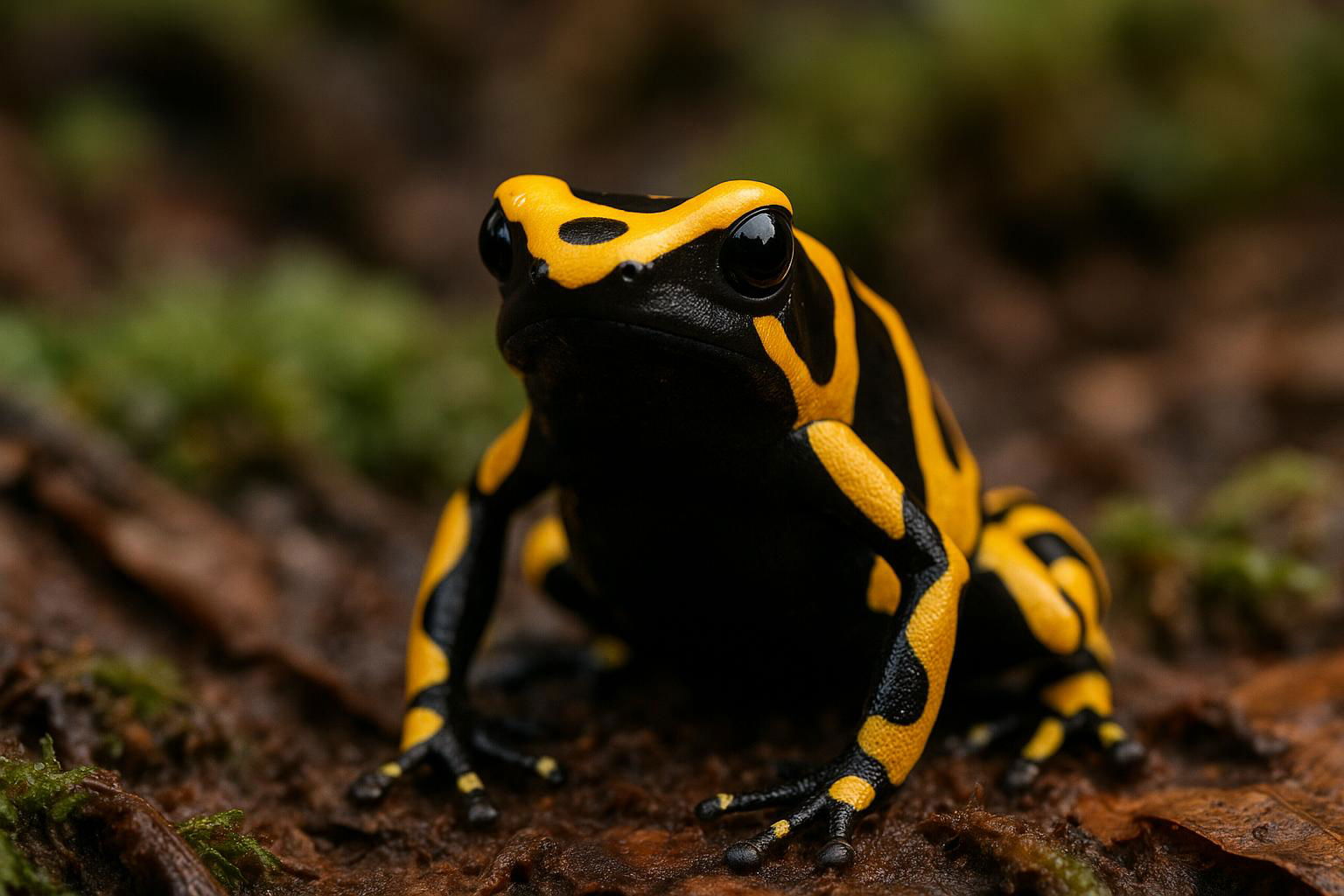
Yellow-Banded Poison Dart Frog
Dendrobates leucomelas
The Yellow-Banded Poison Dart Frog, scientifically known as *Dendrobates leucomelas*, is a captivating and vividly colored amphibian native to the tropical rainforests of Venezuela, Colombia, and parts of Brazil and Guyana. This small frog, typically measuring between 3 to 5 centimeters in length, is easily recognizable by its striking black body adorned with bright yellow bands or spots, which serve as a warning to potential predators of its toxic nature. The toxicity of its skin is derived from the insects it consumes in the wild, such as ants and mites, making it a formidable deterrent against would-be attackers.
Yellow-Banded Poison Dart Frogs thrive in humid, lowland forests, where they spend most of their time on the forest floor or among the leaf litter. Males are known for their distinctive call, a soft, melodious trill used to attract females and establish territorial boundaries. Breeding typically occurs during the rainy season, with females laying clutches of eggs on moist leaves. Upon hatching, the tadpoles are transported by the male to nearby water sources, such as bromeliad pools, where they undergo metamorphosis.
This species is popular in the exotic pet trade due to its stunning coloration and relatively manageable care requirements in captivity, provided its specific habitat needs are met. Although not currently listed as endangered, the Yellow-Banded Poison Dart Frog faces threats from habitat destruction and pollution. Conservation efforts are essential to protect the ecosystems they inhabit and ensure the survival of this mesmerizing amphibian.

 All Species & Breeds
All Species & Breeds
 Highland Cattle
Highland Cattle
 Miniature Donkeys
Miniature Donkeys
 All Species Directory
All Species Directory
 Highland Cattle in Virginia
Highland Cattle in Virginia
 Miniature Donkeys in Texas
Miniature Donkeys in Texas












